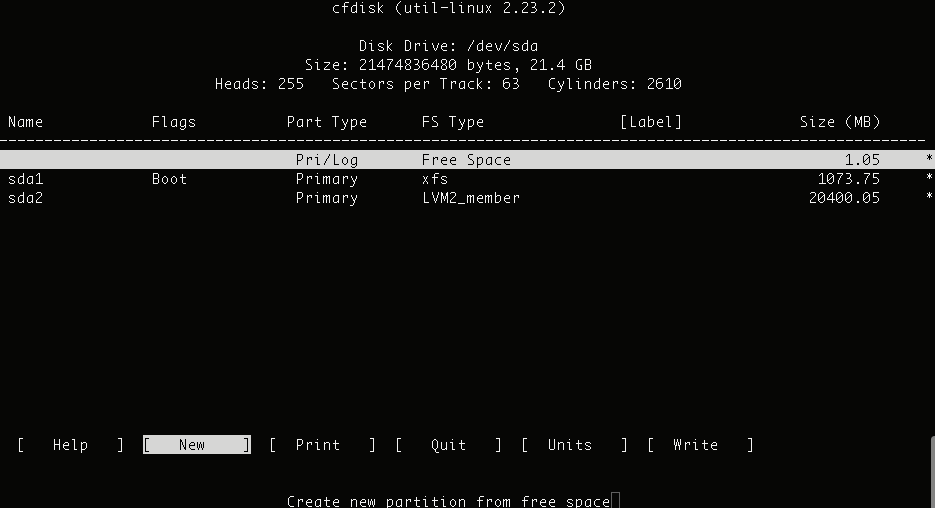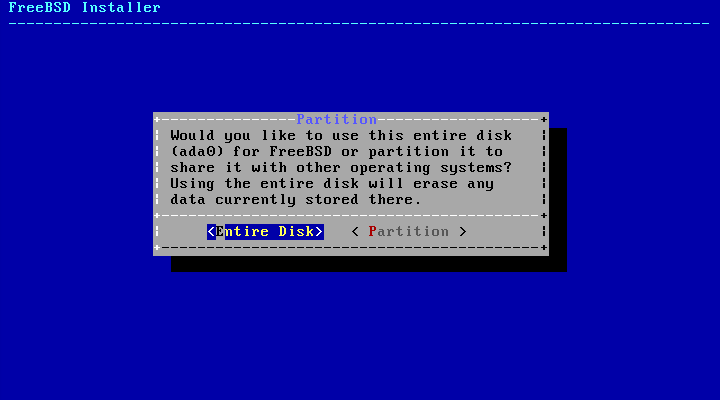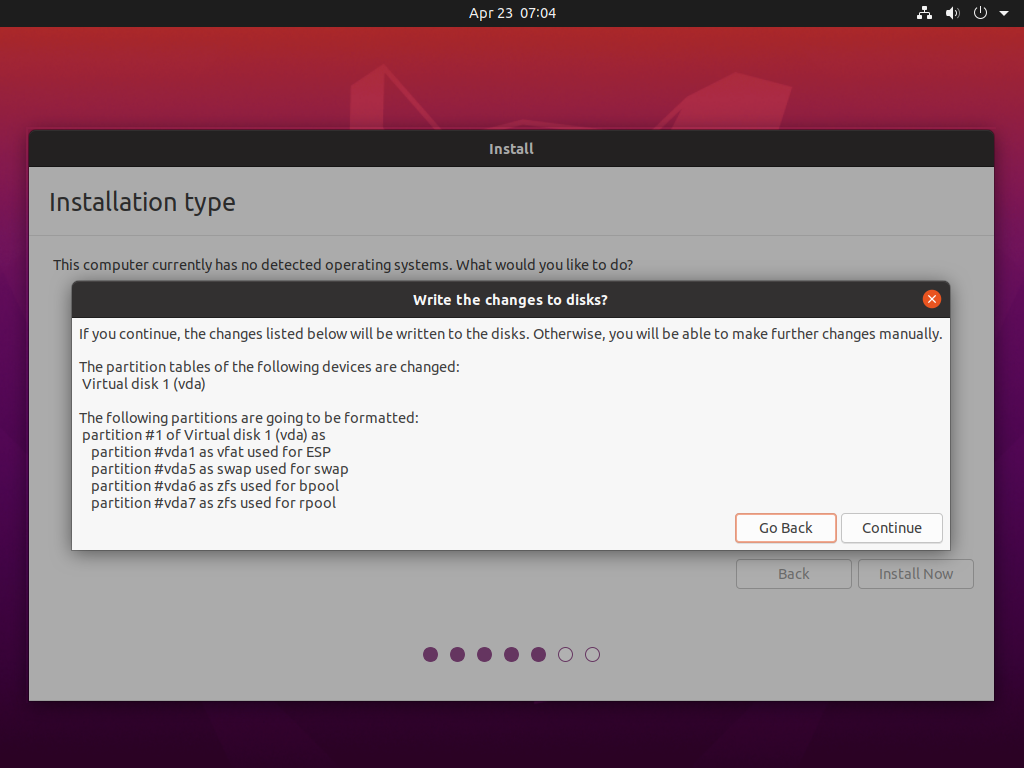on
10+ Zfs create partition info
Zfs Create Partition. Now submit the command gpart recover vtbd0 but. It is recommended to point ZFS at an entire disk ie. Follow the following steps to successfully create a UFS partition Note. This command creates a zpool called datastore however you can change this to suit your needs.
 I Built My Own Super Router Out Of Old Pc Parts And I Ve Never Felt So Powerful From pinterest.com
I Built My Own Super Router Out Of Old Pc Parts And I Ve Never Felt So Powerful From pinterest.com
Calling ioctl to re-read partition table. You need to format it by creating a ZFS pool which will mount it automatically no mount no fstab. For an experiment I created a pool using files as my VDEVS. GRUB_BOOT ZFS data Solaris 8MB. Creating a partition first. Any idea how to create those partitions.
The newly created pool is mounted at new-pool.
100 Should this become the active partition. What are the distinctions between letting ZFS use the whole disk vs. For more information about properties and property inheritance see Introducing ZFS Properties. However this doesnt create the swap partition and gives ZFS the whole disk. 1 Specify the percentage of disk to use for this partition or type c to specify the size in cylinders. I havent used ZFS yet but from doing some reading it seems whole disk is generally recommended yet when you give ZFS the whole disk it creates a partition and uses it anyway unrelated but it also creates a tiny slack partition presumably any model of the same size HDD can be used as mirror.
 Source: softambulance.com
Source: softambulance.com
Now I wish to use partitions. Sudo zpool create -m usrsharepool new-pool mirror devsdb devsdc. Take a look at the partition table to make sure you create something similar fdisk -l devsd your rpool disk. This command creates a zpool called datastore however you can change this to suit your needs. 1 Select the partition type to create.
 Source: youtube.com
Source: youtube.com
Creating ZFS disks under Linux Install ZFS and gdisk Identify the disks device name Create a solaris ZFS partition Create a new ZFS pool Create a dataset Exporting the pool Fixing boot delays caused by unimportable pools See also. 5 zfs-fuse doesnt create any partition by default whole disk and regular file is treated the same way but mostly it was because licensing issue something about libparted being GPL while zfs. 100 Should this become the active partition. Partition 1 contains a zfs_member signature. It is recommended to point ZFS at an entire disk ie.
 Source: linuxhint.com
Source: linuxhint.com
In my case this meant that I needed to know how big my 1 TB and 2 TB drives were so I could partition. It is not necessary to partition the drives before creating the ZFS filesystem. It is recommended to point ZFS at an entire disk ie. Now I wish to use partitions. 1 Select the partition type to create.
 Source: superuser.com
Source: superuser.com
Even though the space for the new partition has been allocated and written to disk you still need to create a filesystem on that newly available space so the next step is formatting the partition with the required filesystem. You can also opt for both or change the designation at a later date if you add more drives to the pool. Creating a new partition. By specifying the argument -f it removes the need to create partitions on the disks prior to creating the array. GRUB_BOOT ZFS data Solaris 8MB.
 Source: thegeekdiary.com
Source: thegeekdiary.com
1 Specify the percentage of disk to use for this partition or type c to specify the size in cylinders. Created a new partition 1 of type Linux filesystem and of size 500 GiB. Zfs create geekpoolfs1 zfs list NAME USED AVAIL REFER MOUNTPOINT geekpool 131K 976M 31K geekpool geekpoolfs1 31K 976M 31K geekpoolfs1 Now by default when you create a filesystem into a pool it. For an experiment I created a pool using files as my VDEVS. We will leave 8MB disk at the end of the partition Proxmox by default creates 3 partitions.
 Source: linuxhint.com
Source: linuxhint.com
We will leave 8MB disk at the end of the partition Proxmox by default creates 3 partitions. Now I wish to use partitions. We will leave 8MB disk at the end of the partition Proxmox by default creates 3 partitions. By specifying the argument -f it removes the need to create partitions on the disks prior to creating the array. Id be interested to hear your thoughts on this and if anyone has had any practical experience of creating a pool this way and running it without a swap file.
 Source: askubuntu.com
Source: askubuntu.com
Id be interested to hear your thoughts on this and if anyone has had any practical experience of creating a pool this way and running it without a swap file. Creating a partition first. This command creates the partitions for my new array Ive described them for you by the -c command. You can set file system properties when the file system is created. Take a look at the partition table to make sure you create something similar fdisk -l devsd your rpool disk.
 Source: pinterest.com
Source: pinterest.com
1 Select the partition type to create. What are the distinctions between letting ZFS use the whole disk vs. I think from what I have read that I can just create unformatted partitions and ZFS will do the rest although it wasnt stated quite clearly enough that I feel confident of. Start gpart show and. Use one slicepartition dedicated for ZFS per physical disc and leave some space left unpartitioned.
 Source: forum.cgsecurity.org
Source: forum.cgsecurity.org
5 zfs-fuse doesnt create any partition by default whole disk and regular file is treated the same way but mostly it was because licensing issue something about libparted being GPL while zfs. You can also opt for both or change the designation at a later date if you add more drives to the pool. Partition 1 contains a zfs_member signature. You can select a different mount point using the -m option. By specifying the argument -f it removes the need to create partitions on the disks prior to creating the array.
 Source: unix.stackexchange.com
Source: unix.stackexchange.com
I think from what I have read that I can just create unformatted partitions and ZFS will do the rest although it wasnt stated quite clearly enough that I feel confident of. Sudo zpool create -m usrsharepool new-pool mirror devsdb devsdc. Devsdx rather than devsdx1 which will automatically create a GPT partition table and add an 8 MB reserved partition at the end of the disk for legacy bootloaders. Calling ioctl to re-read partition table. Creating a new partition.
 Source: pinterest.com
Source: pinterest.com
W The partition table has been altered. What are the distinctions between letting ZFS use the whole disk vs. 5 zfs-fuse doesnt create any partition by default whole disk and regular file is treated the same way but mostly it was because licensing issue something about libparted being GPL while zfs. You can set file system properties when the file system is created. The ZFS pool can be analyzed with zpool status and zfs list.
 Source: pinterest.com
Source: pinterest.com
Do you want to remove the signature. By specifying the argument -f it removes the need to create partitions on the disks prior to creating the array. It is not necessary to partition the drives before creating the ZFS filesystem. Zfs create -o mountpointexportzfs -o sharenfson -o compressionon tankhome. Because as I understand it FreeNAS and I assume ZFS itself not just FreeNAS automatically puts a 2 GB swap space on each HDD hence the two partitions you see labeled freebsd-swap and freebsd-zfs.
 Source: forum.cgsecurity.org
Source: forum.cgsecurity.org
The signature will be removed by a write command. First make sure that you are logged in as root if your are not then use the command su -. 1 Specify the percentage of disk to use for this partition or type c to specify the size in cylinders. You can set file system properties when the file system is created. Zfs create geekpoolfs1 zfs list NAME USED AVAIL REFER MOUNTPOINT geekpool 131K 976M 31K geekpool geekpoolfs1 31K 976M 31K geekpoolfs1 Now by default when you create a filesystem into a pool it.
 Source: allanjude.com
Source: allanjude.com
You can also opt for both or change the designation at a later date if you add more drives to the pool. Created a new partition 1 of type Linux filesystem and of size 500 GiB. Creating a new partition. I think from what I have read that I can just create unformatted partitions and ZFS will do the rest although it wasnt stated quite clearly enough that I feel confident of. GRUB_BOOT ZFS data Solaris 8MB.
 Source: pinterest.com
Source: pinterest.com
You can set file system properties when the file system is created. However this doesnt create the swap partition and gives ZFS the whole disk. Calling ioctl to re-read partition table. You can set file system properties when the file system is created. For more information about properties and property inheritance see Introducing ZFS Properties.
 Source: pinterest.com
Source: pinterest.com
This command creates the partitions for my new array Ive described them for you by the -c command. I havent used ZFS yet but from doing some reading it seems whole disk is generally recommended yet when you give ZFS the whole disk it creates a partition and uses it anyway unrelated but it also creates a tiny slack partition presumably any model of the same size HDD can be used as mirror. Follow the following steps to successfully create a UFS partition Note. 100 Should this become the active partition. Run the zpool create command passing in the disks to use for the array as arguments.
 Source: didrocks.fr
Source: didrocks.fr
Zfs create -o mountpointexportzfs -o sharenfson -o compressionon tankhome. 100 Should this become the active partition. ZFS isnt installed on the partition its installed on the HDD and is creating a data space and a swap space itself. Now submit the command gpart recover vtbd0 but. Created a new partition 1 of type Linux filesystem and of size 500 GiB.
 Source: pinterest.com
Source: pinterest.com
Follow the following steps to successfully create a UFS partition Note. Follow the following steps to successfully create a UFS partition Note. 1 Select the partition type to create. Create some ZFS datasets with zfs create. Create a ZFS pool on it with zpool create.